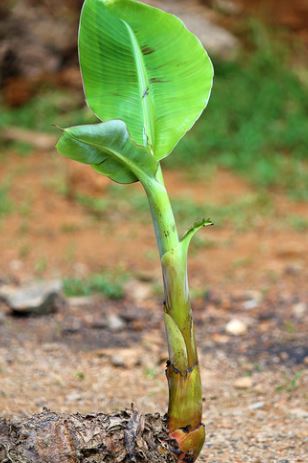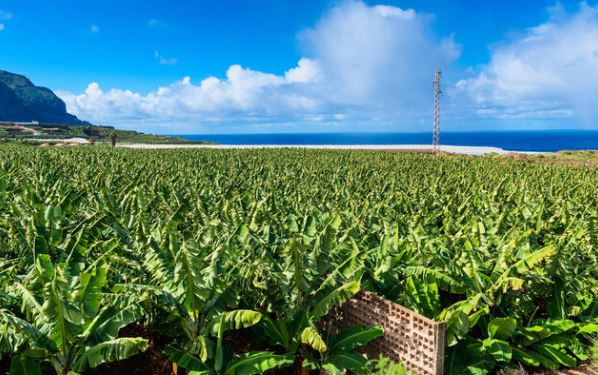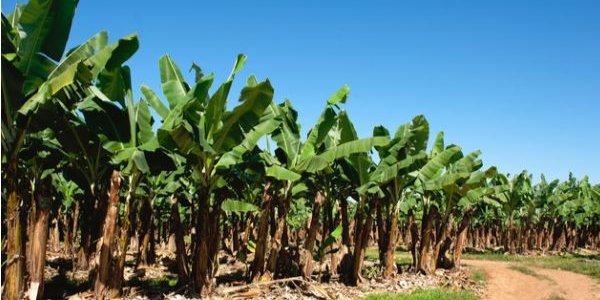Bananas are among the most popular fruits worldwide. Any moment you move into a traditional grocery or a supermarket, you notice that bananas are always available at a friendly price, but how do they grow? Probably, you are wondering why bananas rarely get depleted from groceries. Well, the secret is all about “how bananas grow”.
How Bananas Grow
Bananas are grown from rhizomes unlike most plants grown from seeds. The rhizomes are nurtured into banana suckers.
They are perennial crops that replace themselves and it takes 9-12 months for a banana to mature and be ready for harvesting. Bananas start flowering in the sixth or seventh month after sowing.

If you have never visited a banana plantation or farm, you are missing more interesting and exciting facts about bananas.

Unlike other fruits sown from seeds, bananas do grow from banana suckers or pups. Although bananas have seeds, they can’t be grown from seeds. Bananas seeds are extremely small and unable to give rise to fresh banana plants.
Banana suckers are young and fresh banana plants. They develop from advanced and extended lower stems known as rhizomes. Banana rhizomes produce these suckers for the following purposes.

Banana Reproduction
Living things produce to avoid being extinct in the future. Since banana seeds are unable to give rise to new plants, they have got an alternative way of developing pulps for reproduction.
Banana Pups
Banana pups appear to be new plants flourishing separately. They are detached from the roots of their mother plant when they are 3-4 feet tall. At the height of four feet, suckers are mature enough to flourish on their own. So, the farmer decides whether to transfer them to another ground or leave them to grow in groups.
Suckers
Suckers grow, mature, and produce fruits. Meanwhile, the suckers will eventually produce new suckers and the process continues. In this way, bananas archive their reproduction interestingly and harmoniously.
Absorption of water, nutrients, and sunlight.
One of the adaptations of xerophytes is having more long roots to absorb enough water. In the same way, xerophytes employ this unique feature, bananas tend to copy it with exactness.
More suckers are a clear indication of many roots and rhizomes. Bananas are thus able to absorb enough water and vital nutrients. The suckers are considered important as they enable banana plants to survive and thrive even in harsh conditions.
Support for Banana Plants
Support is more like a basic need for all plants. Contrary to your expectation of a woody stem, banana stems are thick congested leaves filled with water. You don’t expect such kind of a stem to support the entire plant fully.
Bananas do give rise to these suckers to obtain full support. Being in a group means bananas establish their roots in the soil. They are therefore protected from strong winds and any external pressure.
Where Are Bananas From?
Bananas come from banana plants grown either in plantations or small gardens. They are grown in tropical areas where the temperature average is 27 degrees Celsius.
It is believed that early bananas were grown in the jungles of the Philippines, Malaysia, and Indonesia. This jungle is where varieties of bananas are still found. Bananas spread from Southeast Asia to other parts of the world.
How to Plant a Banana Sucker
Replanting a banana is a process that begins with a careful examination of mature sword suckers. The identified sucker should have a well-developed root system that will enable it to thrive in new ground.
The following are essential during the replanting of a banana; narrow digging bar, shovel, compost, mulch, pruning shears, fertilizer, and container (optional)
Procedure.
- Examine the suckers available. A sword sucker has a small, sharp-pointed leave with a developed root system. Water suckers have broad leaves and weak root systems.
- Identify the right sword sucker. The right sword sucker is at least 3 feet tall. Any sucker below this height will dry up and die if separated from the mother plant.
- Remove the sucker by positioning the digging bar at an angle of 30 degrees between the sword sucker and the main stem. Push down the digging bar to cut the connection between the sucker and the mother plant.
- Lift the banana sucker carefully to avoid damaging the roots. Then remove all or most leaves to allow the sucker to focus on the root system only.
- Prepare the planting site by digging two feet deep and three feet wide. Follow by mixing one or two inches of compost.
- Plant the sucker in the ground and fill the rest of the hole with enough soil.
- Water the sucker deeply after planting. Thereafter, you can water for 2-3 days a week.
- Mulch the base of the sucker to prevent rapid loss of moisture.
- Feed the young banana plant with 0.5 cups of balanced fertilizer at the moment of planting.
Management Practices on a Growing Banana
Certain conditions may hinder the proper development of banana plants. Such are weather, soil, and some human activities. There is a need, therefore, to carry out several management practices for a banana to grow well.
1. Propping
Banana bunches may be overweight especially when the plants bear many fruits. An overweight bunch would cause the banana stem to bend or break. This would harm the quality and quantity of the produce.
A y-shaped stand may be used to support the stem to prevent banana bunches from falling. It will also aid in the uniform development of the banana bunch.
2. Weeding
Weeds compete with banana plants for water, sunlight, and nutrients. Moreover, weeds harbor dangerous pests and can transmit diseases to banana plants. To prevent risks that weeds cause, it is necessary to remove the weeds.
3. Manuring and fertilizer application
Pants need essential nutrients like nitrogen, phosphorus, and potassium to thrive well. In cases where these nutrients are depleted from the soil, it is crucial to add fertilizers and manure to enrich the soil. Otherwise, bananas may produce a high quantity of quality fruits.
4. Irrigation and mulching
Irrigation is supplying a controlled amount of water to a plant. When drought knocks, it would be necessary to irrigate your bananas to prevent wilting.
Mulching prevents soil from losing moisture rapidly. It is also a better method of controlling weeds.

